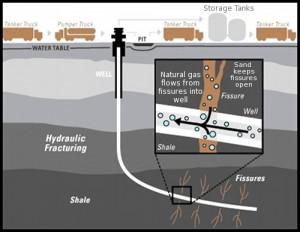DisastersExperts: Fracking-induced earthquakes are real, requiring scientific guidelines
In the wake of increased seismic activity and rare advanced warnings, seismologists are urging the U.S. Geological Survey to include quakes resulting from hydraulic fracturing for underground oil and gas, or fracking, as an estimated hazard.

Relationship between deep-well pumping and quakes becomes clearer // Source: suffolk.edu
In the wake of increased seismic activity and rare advanced warnings, seismologists are urging the U.S. Geological Survey to include quakes resulting from hydraulic fracturing for underground oil and gas, or fracking, as an estimated hazard.
As Clean Technica reports, “the annual Seismological Society of America (SSA) meeting last Thursday featured a daylong session on ‘induced seismicity’ that featured new research indicating that oil and gas fracking, and the practice of disposing of wastewater underground, can alter the state of an existing fault…[The] SSA cites significant increases in seismic activity linked to increased fracking and wastewater operations in Colorado, Oklahoma, Texas, Arkansas and Ohio among other states.”
The greater message, according to a new paper from the organization, is that fracking, and also methods of underground wastewater disposal, “may trigger quakes at a greater distance than previously thought.” This ultimately means that the damaging seismic effects can be found in areas far outside of the targeted zones.
Despite this, Clean Technica notes that “currently there is no platform for the U.S. Geological Survey to include fracking earthquakes (or any other induced earthquake, for that matter), into its estimates of seismic hazards…The work is under way at USGS.”
Additionally, a cited study from Western University in Ontario, Canada explains “how fracking, wastewater disposal and other new sources of seismicity can create new hazards that are not accounted for in existing building codes and infrastructure planning.”
The lack of infrastructural planning can include such vital components as “dams, nuclear power plants, underground pipelines, and other features of the built environment that become damage multipliers when affected by earthquakes.”
Clean Technica also points out that some progress is already being made, with “the City of Los Angeles to prohibit fracking and related activity within city limits.”
